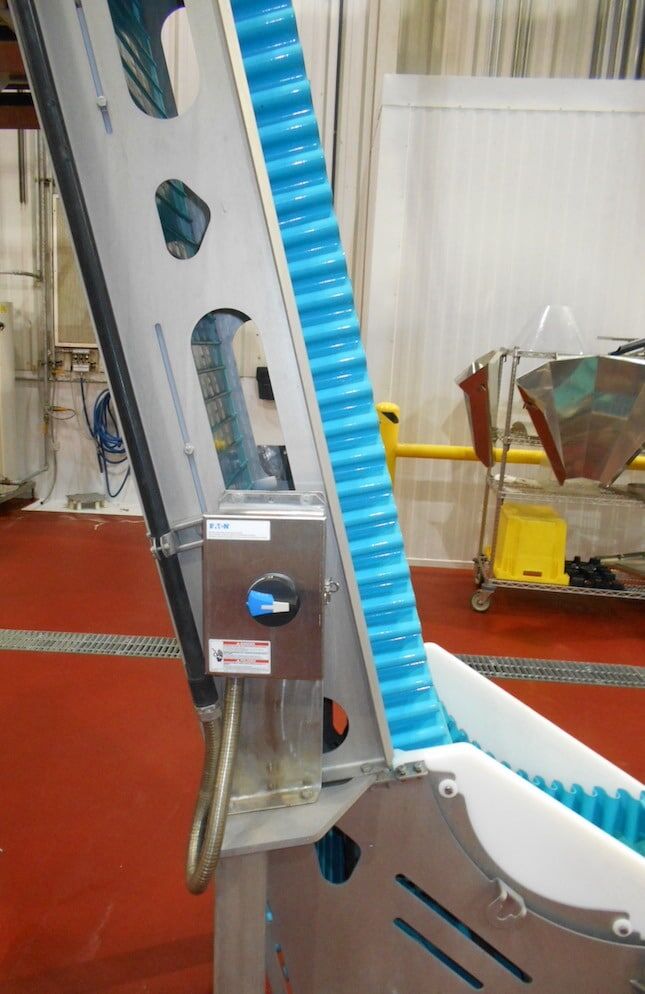Corrugated Belt Conveyors
Corrugated belts feature walls which are expandable so they can wrap around pulleys, and are often combined with cleats to form buckets. Although corrugated belts are also used in food processing plants as pictured here, they are most commonly used in industrial applications like aggregates because they can contain product when it’s being jostled about over uneven terrain.
Corrugated belts can be constructed of a wide range of materials for a wide range of applications. ABM will build or source conveyors from various OEMs depending on the location and needs of your application. For more information or to get a system designed, integrated or serviced, fill out the form below or give us a call.
Features and Benefits:
- Gentle: Corrugate belts are one of the most gentle conveyance methods, able to keep fragile food materials from falling off the belt.
- Low maintenance: One of the easier conveyance methods to maintain, we use corrugated belts with high durability and easy-access in-mind.
- High throughput: Large models are availabe, and the walled belts allow more product to be carried than with standard flat belts.
When to Use
Corrugated belt conveyors are ideal for food products that require gentle handling and minimal damage, such as delicate baked goods, fruits, and vegetables. They are also suitable for high-capacity processing operations that require fast and efficient transportation of food products.
When Not to Use
Corrugated belt conveyors are not suitable for food products that are sticky, wet, or have a tendency to cling to the conveyor belt. They are also not recommended for food products that require high-speed transportation, as the corrugated design can limit conveyor speed.
